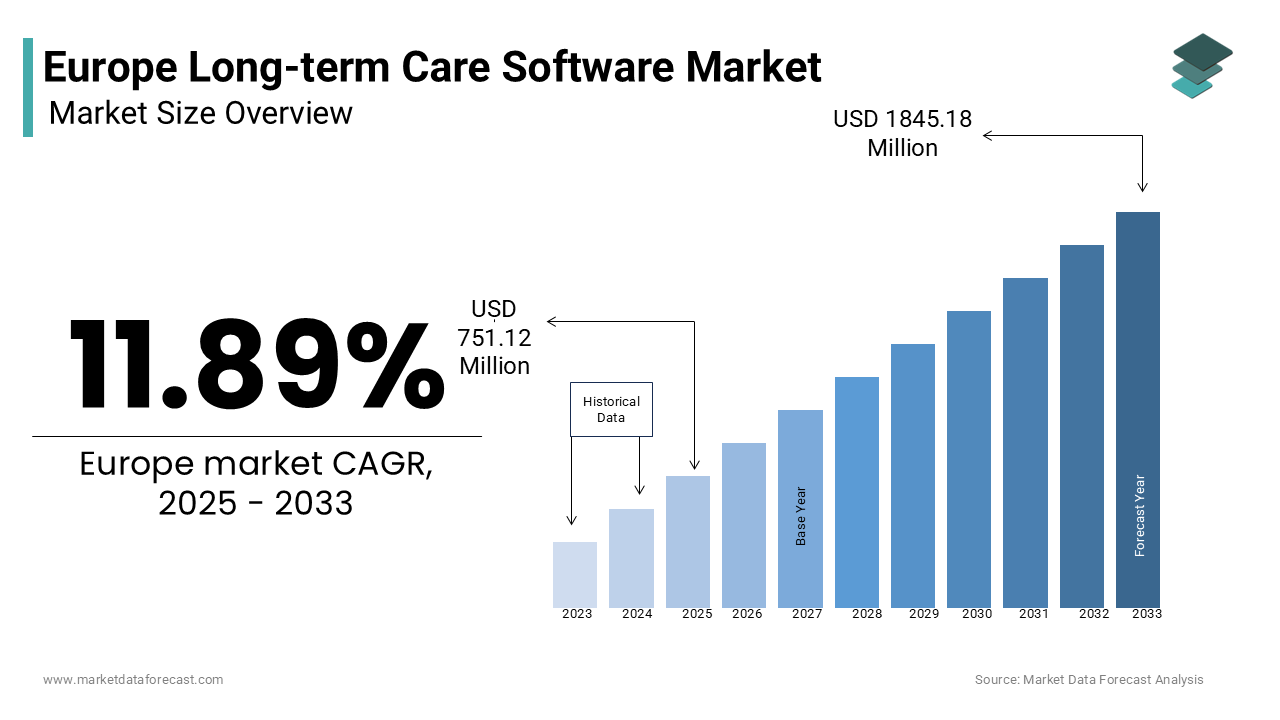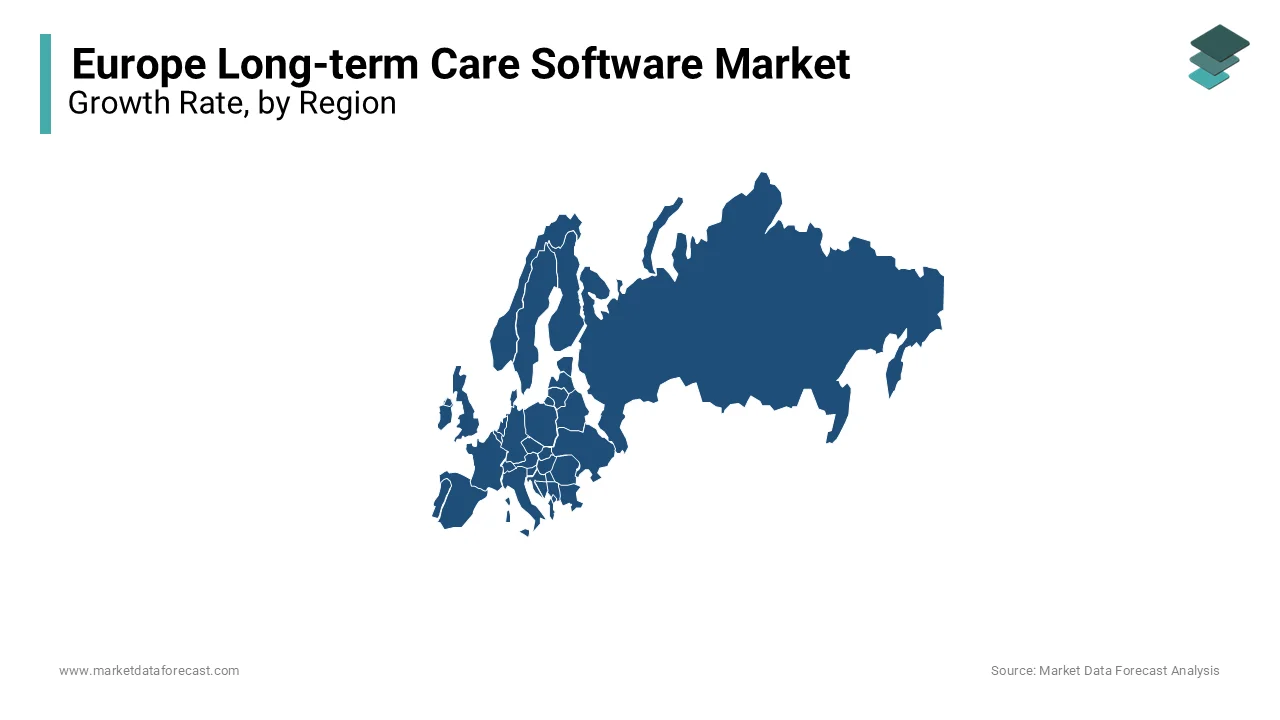Europe Long-term Care Software Market Size, Share, Trends & Growth Forecast Report By Product(Clinical Long-Term Care Software, Non-clinical Long Term Care Software, Payroll Management and Billing), Mode Of Delivery, End User and Country (UK, France, Spain, Germany, Italy, Russia, Sweden, Denmark, Switzerland, Netherlands, Turkey, Czech Republic & Rest of Europe), Industry Analysis From 2025 to 2033
Europe Long-term Care Software Market Size
The long-term care software market size in Europe was valued at USD 671.30 million in 2024. The European market size is further estimated to be worth USD 1845.18 million by 2033 from USD 751.12 million in 2025, exhibiting a CAGR of 11.89% from 2025 to 2033.

Long-term care is a clinical service that helps both the medical and non-medical needs of people with a disability or chronic diseases who cannot take care of themselves. It is concentrated on individualized and coordinated services that give independence and quality of life for the patient and also provide services to patient needs from time to time. Various levels of long-term care include day programs, home care, nursing homes, senior housing, continuing care retirement communities, and assisted living.
Long-term software is a fully integrated electronic health record and other non-clinical solutions to increase patient care, decrease labor costs, and maintain compliance. Data is entered into the software, where it programs and flows through the system for various facilities. It helps in providing consolidated reports for multiple facilities, offers good quality care with accurate information, saves time, automatic inter-facility accounting, boosts efficiency and productivity, maintains records over long periods, and reduces the risk of redundancy by eliminating inconsistencies in documentation.
MARKET DRIVERS
An increase in the aging population, rising prevalence of chronic diseases, a shortage of skilled nursing personnel, rise in disposable income, increasing healthcare reforms and government initiatives, and opportunities offered by remote patient monitoring systems and cloud-based software are expected to boost the growth for the Europe long-term care software market.
MARKET RESTRAINTS
However, lack of awareness, high software maintenance costs, the reluctance of conventional LTC providers to adopt software and insufficient government initiatives in developing countries are restraining the growth of the market.
REGIONAL ANALYSIS

Based on the region, Germany leads the market, followed by France and the UK. The market in this region is projected to grow strongly during the forecast period due to various factors, such as growing awareness and favorable reimbursement policies.
KEY MARKET PLAYERS
AOD Software, Cerner Corporation, Allscripts Healthcare Solutions, Inc., McKesson Corporation, Omnicare, Inc., Omnicell, Inc., Kronos incorporated, HealthMEDX, PointClickCare, Matrix Care, Sigma Care, and Optimus EMR are a few of the notable companies in the Europe long term care software market.
MARKET SEGMENTATION
This research report on the Europe long-term care software market is segmented and sub-segmented into the following categories.
By Product
- Clinical Long-Term Care Software
- EMR/HER
- e-Prescribing
- Electronic Medication Administration Records
- Clinical Decision Support Systems
- Non-clinical Long Term Care Software
- Payroll Management and Billing
- Remote Patient Monitoring Systems
- Real-Time Location Systems
- Remote Training and Supervision Systems
- Invoicing And Scheduling Software
By Mode of Delivery
- Cloud-based
- Web-based
- On-premises
By End-user
- Home Healthcare
- Nursing care
- Assisted Living Facilities
By Country
- UK
- France
- Spain
- Germany
- Italy
- Russia
- Sweden
- Denmark
- Switzerland
- Netherlands
- Turkey
- Czech Republic
- Rest of Europe
Related Reports
Access the study in MULTIPLE FORMATS
Purchase options starting from $ 2000
Didn’t find what you’re looking for?
TALK TO OUR ANALYST TEAM
Need something within your budget?
NO WORRIES! WE GOT YOU COVERED!
Call us on: +1 888 702 9696 (U.S Toll Free)
Write to us: [email protected]
